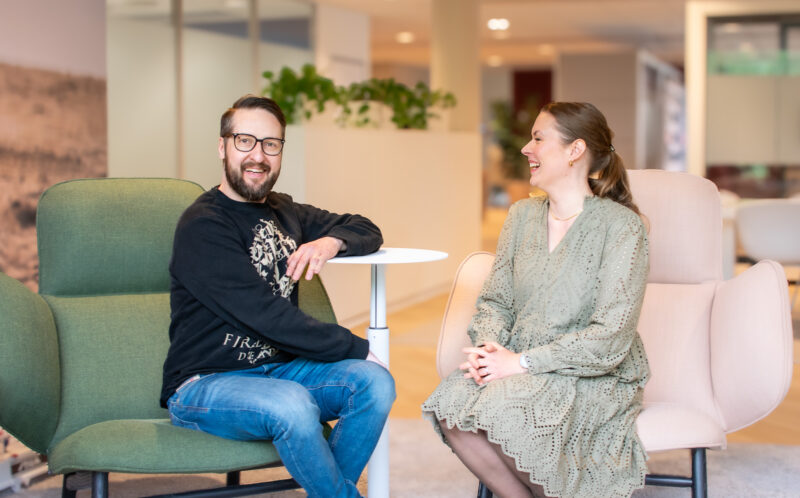Director, are you the weakest link in your organisation’s business development?
The principle of rapid value creation and the use of generative AI have made business development projects more human-centric and efficient. The key is to make sure that organisational development-focused operating models do not slow down agile business design, Sofigate’s Sanna Suomela reminds us.
For years, business and the digital services that support it have been developed in a linear fashion through three main stages. The design phase starts with the business objectives and needs of the company and defines the capabilities required. In the next phase, solutions have been developed to meet these capabilities using existing technology. The final stage is to deploy the service, integrate it with other systems in the company, and maintain the completed service.
These phases have been sequential and clearly separate. Each phase has been carried out by different parts of the company, often with the help of external consultants. As the project has moved from one phase to the next, responsibility for the project has also passed from one person to another, like a baton.
Traditional planning methods are cumbersome. As a result, business managers often outsource their use, while ignoring their own thinking. Linear projects have also been slow, with each stage having to wait for the previous one to be completed. While the introduction of a DevOps approach, based on greater collaboration between development and IT teams, has accelerated the latter two phases of projects, the average linear business development project in an SAP environment, for example, still takes more than two years.
From years to months and months to hours
The good news is that the principle of integrated time to value radically speeds up business development by making previously sequential steps almost simultaneous. The use of generative AI provides a fast interpreter between business and technology, removing the risk of delegating thinking. Leaders will remain at the heart of the business itself, speaking the language of the business and taking responsibility for the future capabilities of the business.
For example, in a fictional e-commerce returns process development project, a business leader can describe in his own words how the company’s returns process should work as easily as giving instructions to a summer intern at the company. Based on this description, generative AI is used to build the desired business capabilities, from which the AI within the business platform used by the company will make the necessary technological changes. A step that could once take months is now done in a matter of hours.
The development, production and integration of the service to be delivered can start immediately. Business managers are at the heart of the design process and can validate the desired functional changes within days of the design start.
The bad news, however, is that business planning processes in many companies are still organised on a quarterly basis. While managers have focused on speeding up the development cycle time, the business planning process has remained slow. As a result, the implementation of a new feedback process can become stuck waiting months for the next business management decision, even when technology allows it to be done in hours.
Three rules for an effective development project
So how can a company ensure that a business development project based on rapid value creation works as intended and delivers value quickly? By following three key principles.
- Don’t outsource your thinking
In a rapid value chain, the director cannot escape their responsibilities. Their most important task is to build a crystal-clear picture of the business capabilities that the business development projects are aiming to achieve, based on the company’s strategic objectives.
- Make generative AI a development tool
Business development projects aim to support the company’s business strategy. Development work must therefore be based on the specific situation and differentiators of the company, not on the abstract idea of the average company. This is most effectively ensured by letting AI do the work that is difficult and slow for humans to do, for example by using large volumes of a company’s own business data for business planning.
Generative AI evolves so quickly that the most effective learning happens through trial and error. Just like learning a new language, the best way to learn is to speak it. Always better if your conversation partner is experienced and inspires you to learn more.
- Involve people
Although the business director has the main responsibility for defining the objectives of a development project and managing it, they cannot do it alone, even in the age of AI. The most effective way to involve all relevant departments in a development project from the start is to create a design community around the project.
In a design studio, experts from different disciplines work intensively together with expert coaches. In this way, the management of a development project is not just about technology, but above all about people. The end result is that people from different departments are committed to the necessary changes in approach, the process is accelerated – and the organisation is no longer slowed down in achieving its own goals.
Read more:
Three mistakes to avoid when implementing AI
Author
Sanna Suomela leads Sofigate’s Transformations business with the goal of changing the world together with customers one business transformation at a time.


